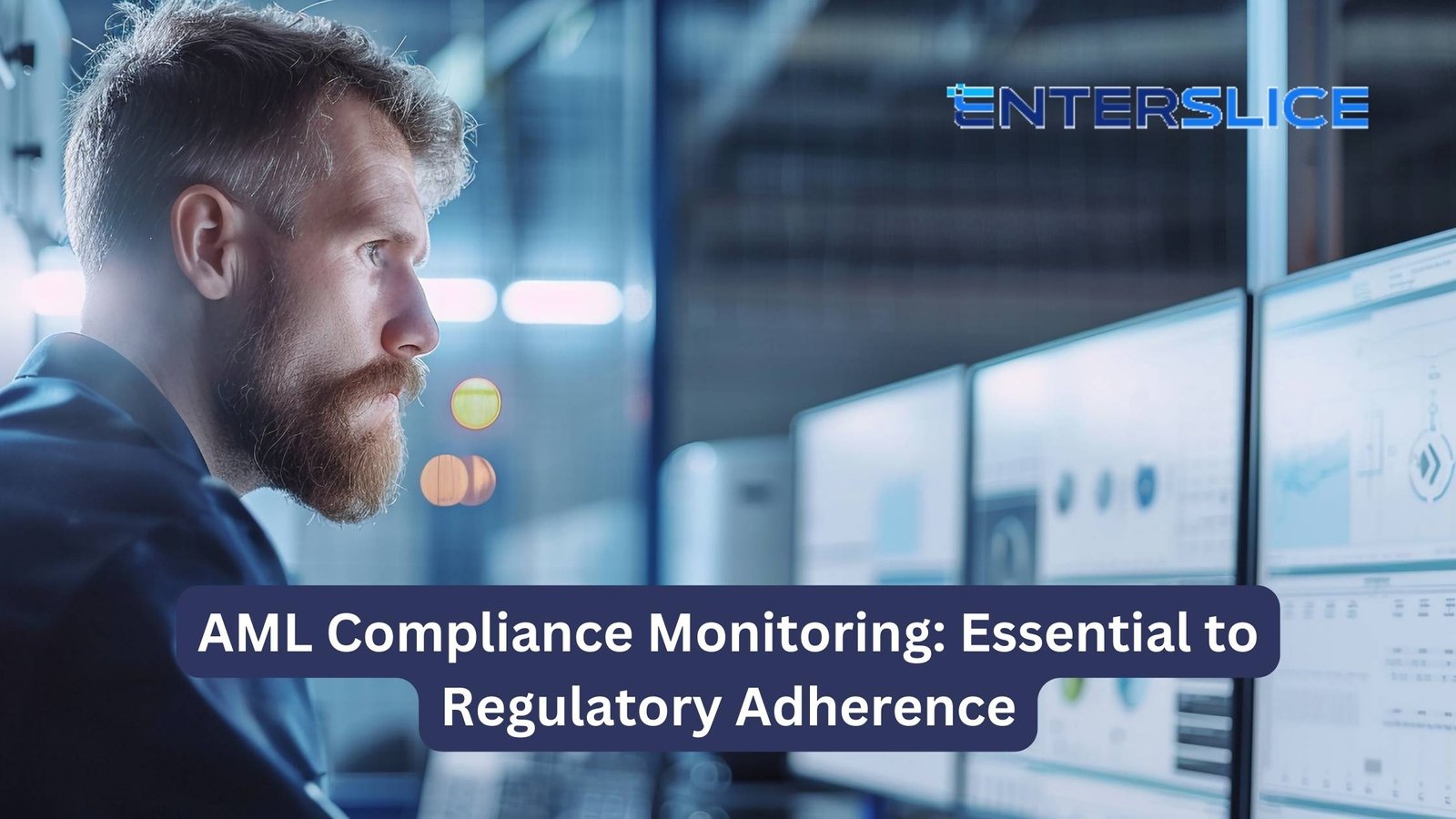In today’s increasingly interconnected and complex financial landscape, businesses especially those in the financial services sector are faced with a rising tide of regulatory pressures. The ever-evolving nature of financial crime, particularly money laundering, poses significant risks to businesses that fail to adequately monitor and test their transactions. AML (Anti-Money Laundering) compliance monitoring is not just a good practice but a critical necessity for ensuring regulatory adherence and mitigating potential risks.
This blog delves into why AML compliance testing monitoring is a must-have for regulatory adherence, how it functions, and why it is essential for businesses, especially when dealing with cross-border transactions.
What is AML Compliance Monitoring?
AML Compliance Monitoring refers to the processes and tools that businesses use to track, review, and report suspicious financial activities. It ensures that the organization adheres to the regulations set by national and international bodies, such as the Financial Action Task Force (FATF), and complies with local laws governing financial transactions. The main goal is to detect and prevent money laundering, terrorist financing, and other illicit financial activities.
AML compliance involves two main processes: AML Compliance Testing and AML Compliance Monitoring. While testing evaluates the effectiveness of an organization’s anti-money laundering policies and systems, monitoring continuously tracks transactions and behavior to identify unusual or suspicious activity.
Why Is AML Compliance Monitoring Essential?
- Mitigating Financial Crime Risks
One of the most critical reasons for AML monitoring is to protect your business from financial crime. Financial institutions are often targeted by criminals seeking to launder money or fund illegal activities. AML compliance monitoring systems help detect suspicious activity early, thereby preventing your business from inadvertently becoming involved in illegal financial transactions.
- Ensuring Regulatory Adherence
The regulatory environment surrounding AML laws is strict and continuously evolving. Non-compliance with AML regulations can lead to severe financial penalties, legal consequences, and long-lasting reputational damage. Continuous AML compliance testing monitoring helps ensure that your business remains compliant with all relevant regulations, reducing the risk of fines and sanctions.
- Safeguarding Reputation
A company’s reputation is one of its most valuable assets. Businesses that fail to comply with AML regulations risk damage to their credibility and trustworthiness. By implementing effective AML monitoring, your organization can demonstrate a strong commitment to protecting clients, investors, and stakeholders from financial fraud.
- Improved Detection of Suspicious Transactions
AML compliance monitoring systems are designed to automatically flag irregular or suspicious transactions in real-time. This allows businesses to identify high-risk activities that could indicate money laundering, terrorist financing, or other criminal activities. Whether it’s a large wire transfer or unusual patterns in cross-border transactions, these monitoring systems are equipped to detect red flags quickly.
The Role of Technology in AML Compliance Monitoring
The complexity of monitoring financial transactions, particularly in today’s digital age, requires advanced technology. Manual systems simply cannot keep up with the volume and complexity of transactions happening every day. AML compliance monitoring has evolved significantly, thanks to technological advancements in automation, machine learning, and artificial intelligence (AI).
Here are some ways technology enhances AML compliance monitoring:
- Real-Time Monitoring: Modern AML systems offer real-time tracking, allowing businesses to catch suspicious activities as they occur. These systems can instantly flag transactions for further investigation.
- Machine Learning: Machine learning algorithms help in detecting patterns of suspicious behavior by continuously learning from new data. Over time, these systems improve their ability to distinguish between legitimate and potentially harmful transactions.
- Data Analytics: AML systems analyze vast amounts of data, helping businesses identify subtle connections between transactions that may be indicative of money laundering or fraud.
- Automation of Reports: Automated reporting systems make it easier to submit necessary documents to regulatory bodies, reducing the risk of human error and ensuring timely compliance with regulatory deadlines.
Cross-Border Transactions and Their Complexity
One of the areas where AML compliance monitoring becomes even more crucial is in cross-border transactions. International financial transactions come with unique challenges, such as differences in regulatory standards, currency exchange, and varying banking protocols across different countries.
AML Compliance Cross Border Transactions often involves additional scrutiny due to the risk of illicit money flowing across borders undetected. These transactions are typically larger in scale and can involve multiple parties, making them prime targets for money laundering. Monitoring these transactions effectively requires a comprehensive understanding of international laws, jurisdictions, and regulations.
AML systems must be capable of monitoring transactions in multiple currencies, recognizing high-risk countries, and ensuring compliance with international AML standards. This is particularly important for financial institutions that operate globally or handle cross-border payments.
How AML Compliance Monitoring Protects Your Business
- Proactive Risk Management
By integrating AML compliance testing monitoring, your business can detect potential risks before they escalate. Rather than reacting to suspicious activity after the fact, proactive monitoring enables your organization to take preventive action. Regular testing and monitoring ensure that your systems are always up-to-date with the latest regulatory changes and can respond to emerging threats.
- Enhancing Customer Trust
Customers want to know that their money is safe and that the financial institutions they work with are committed to upholding legal and ethical standards. Demonstrating a strong commitment to AML compliance monitoring builds trust with customers, clients, and investors. Businesses that have robust AML processes in place are more likely to attract and retain high-value customers.
- Reducing Operational Costs
While implementing effective AML compliance monitoring systems may seem like a significant upfront investment, it ultimately reduces the costs associated with penalties, legal fees, and reputational damage. It also helps streamline internal processes, improving operational efficiency over time.
Steps to Implement Effective AML Compliance Monitoring
- Conduct a Risk Assessment
The first step in implementing AML compliance monitoring is assessing your business’s specific risks. Different industries, regions, and business models pose varying levels of risk, so it’s important to tailor your monitoring systems accordingly. - Set Clear Policies and Procedures
Develop a clear set of policies and procedures for detecting and reporting suspicious activities. Ensure that your employees are well-trained in these procedures and understand the significance of their role in AML compliance. - Integrate AML Monitoring Systems
Invest in a robust AML monitoring system that offers real-time surveillance, automation, and analytics. Ensure that the system is capable of handling both domestic and international transactions, particularly cross-border transactions. - Conduct Regular AML Compliance Testing
Regular testing of your AML systems ensures that they are functioning as expected and remain compliant with evolving regulations. This is essential to identify any gaps or weaknesses in your compliance program. - Stay Updated with Regulatory Changes
AML regulations are constantly evolving, so it’s important to stay informed about new laws, guidelines, and best practices. Implementing an adaptive monitoring system ensures that your business can quickly respond to changes in regulatory expectations.
FAQs
1. What is the difference between AML compliance monitoring and AML compliance testing?
AML compliance monitoring focuses on ongoing surveillance of transactions to detect suspicious activity in real time, while AML compliance testing evaluates the effectiveness of your AML processes through periodic reviews.
2. How do cross-border transactions affect AML compliance screening?
Cross-border transactions introduce additional complexities, such as varying international regulations and currency exchanges, which require enhanced monitoring systems capable of detecting high-risk transactions across multiple jurisdictions.
3. What are the consequences of failing to implement AML compliance screening?
Failure to implement AML compliance can result in hefty fines, legal sanctions, reputational damage, and a loss of customer trust. It can also expose your business to criminal activities such as money laundering or terrorist financing.
Conclusion
In today’s fast-paced financial world, AML compliance monitoring is no longer optional. It’s a must-have for businesses that want to ensure regulatory adherence, protect their reputation, and mitigate financial crime risks especially when dealing with cross-border transactions. By implementing the right monitoring systems, businesses can stay ahead of regulatory requirements and provide a safe, trustworthy environment for their clients and stakeholders.












Leave a Reply